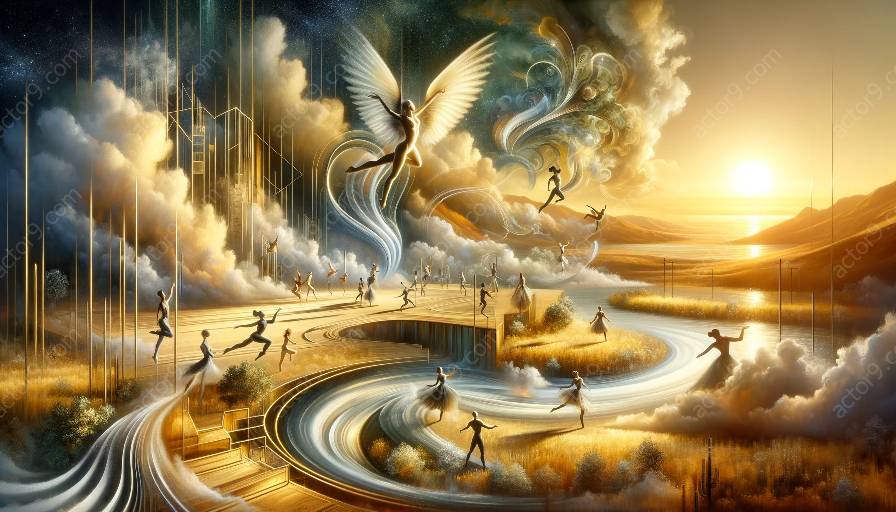In the world of performing arts, the intersection of physical theatre and circus arts creates a dynamic and captivating combination. This topic cluster will explore the main principles that define physical theatre within the context of circus arts, shedding light on the unique qualities, techniques, and collaborative elements that govern this fascinating art form.
Understanding Physical Theatre
Physical theatre is a form of performance that emphasizes the use of the body as the primary means of communication. It combines elements of movement, gesture, and physical expression to convey narratives and emotions without relying heavily on dialogue. The core principles of physical theatre lie in the embodiment of characters and stories through physicality, creating a compelling and immersive experience for the audience.
Exploring the Intersection
When physical theatre intersects with circus arts, it unleashes a world of creative possibilities. Circus arts, known for its acrobatics, aerial performances, and physical feats, inject an added layer of dynamism and spectacle into the realm of physical theatre. The fusion of these two art forms allows performers to showcase their physical prowess while also engaging in storytelling and immersive theatrical experiences.
Principles of Physical Theatre in Circus Arts
1. Physicality: The fundamental principle of physical theatre in circus arts is the emphasis on physical expression and movement. Performers use their bodies to convey emotions, narratives, and characterizations, often through dynamic and visually stunning actions.
2. Storytelling through Movement: In the context of circus arts, physical theatre serves as a powerful tool for storytelling. Through choreographed movements, acrobatics, and aerial performances, performers communicate narratives and themes, transcending language barriers and immersing the audience in the world of the performance.
3. Collaboration and Ensemble Work: Physical theatre in circus arts thrives on the spirit of collaboration. Ensemble work is crucial, as performers need to synchronize their movements, trust one another in acrobatic displays, and create harmonious and visually impactful sequences that captivate audiences.
Key Techniques and Approaches
As physical theatre and circus arts converge, several key techniques come into play:
- Physical Training: Performers engage in rigorous physical training to build strength, flexibility, and agility, essential for executing acrobatics and aerial acts with precision and grace.
- Mime and Gestural Language: The use of mime and gestural language amplifies the communicative power of physical theatre, allowing performers to convey intricate emotions and narratives without relying on spoken words.
- Theatrical Rigging and Equipment: Circus arts bring in specialized rigging and equipment that provide performers with unique platforms for physical expression, such as aerial silks, trapezes, and bungee cords, adding architectural and dynamic dimensions to their performances.
Conclusion
By embracing the main principles of physical theatre within the context of circus arts, performers create a mesmerizing synergy between physicality, storytelling, and collaborative artistry. This intersection paves the way for innovative and captivating performances that transcend traditional boundaries, inviting audiences into a world where movement, emotion, and spectacle intertwine to form unforgettable theatrical experiences.




































